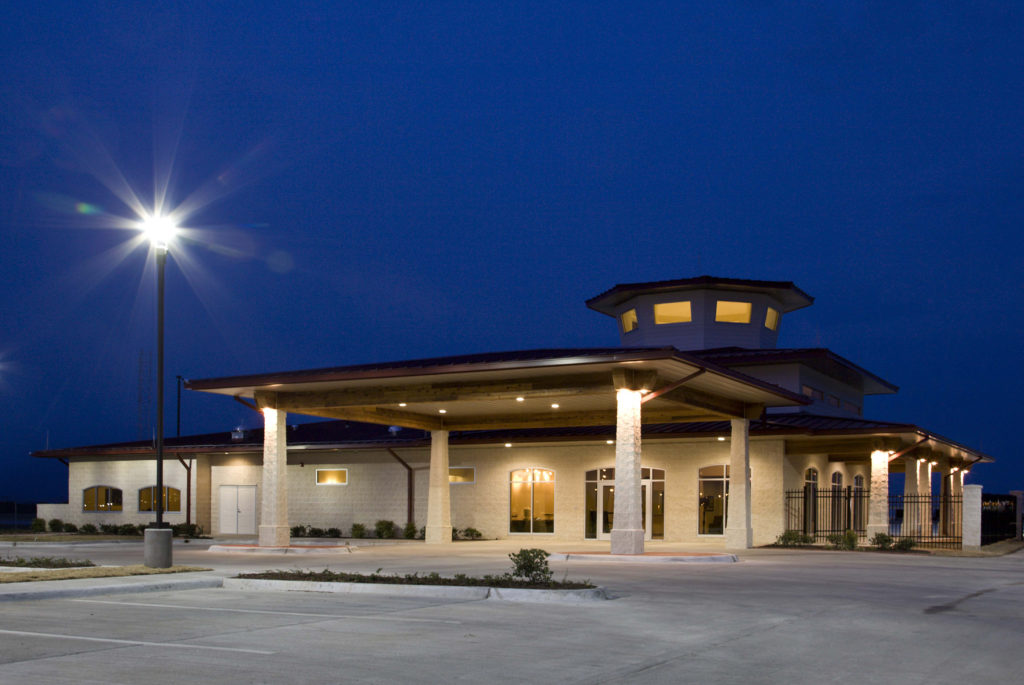
The terminal building at Terrell Municipal Airport opened in 2011 and pays homage to the No. 1 British Flight Training School where the Royal Air Force flying cadets learned to fly for European combat.
Visitors to Terrell Municipal Airport (KTRL) immediately notice the high standards. The perfectly manicured and landscaped entrance to the airport serves as the front door for economic development for the region. All airport buildings are immaculately maintained. Navigational aids are kept in excellent condition and inspections are made regularly. It is evident that the exemplary management and operation of this award-winning airport is a priority. Take, for example, the unique terminal building, which opened in 2011.
The terminal building pays homage to the No. 1 British Flight Training School where the Royal Air Force flying cadets learned to fly for European combat. The top of the building is shaped like the historic air traffic control tower, and the floor of the lobby has a map that depicts the training routes in correlation with Europe. There is also a small British Flight Training School museum inside the terminal.
“When we originally conceived the idea for the terminal, we really wanted to do it right,” noted Terrell City Engineer Steve Rogers. “This building requires very little maintenance. There is a conference room and clean, modern facilities for pilots. Tying our history into the design was something that makes this
building special.”
The airport was first developed from land sold by a local resident in 1940. The government then acquired it during World War II for training operations, where it achieved international fame as the home of the number one British Flight Training School.
Today, this modern airport is home to five Fortune 500 company divisions that create thousands of jobs and serves the owners of nearly 100 based aircraft. The companies include distribution centers for Goodyear, AutoZone and Wal-Mart.
“We have 150 acres of available landside and airside sites in our Airport Business Park,” said Terrell Director of Public Works Glenn Caldwell. “We are in a great location next to I-20, U.S. 80 and SH 34, so we feel confident in our ability to foster future growth at the airport.”
In addition to the new terminal building, the airport also recently constructed a new airport terminal access road which improved the drainage. Future plans include relocating the fuel next to the terminal building. Guiding this airport’s vision was their 2005 Airport Master Plan, which set the stage for the leaders of this community to guide in the development of this first-class airport. The airport has been self-sustaining for over 10 years and boasts an airport fund that has increased 100% within those years.
This airport is also very active in the community. The annual September Flights of our Fathers Fly-In has garnered such tremendous attention that it now requires an assigned air boss to oversee the over 60 aircraft that come to join in the fun of more than 2,500 visitors.
“My main message is that we are open for business!” said Rogers. “I encourage everyone to visit us and see what we have to offer.”
